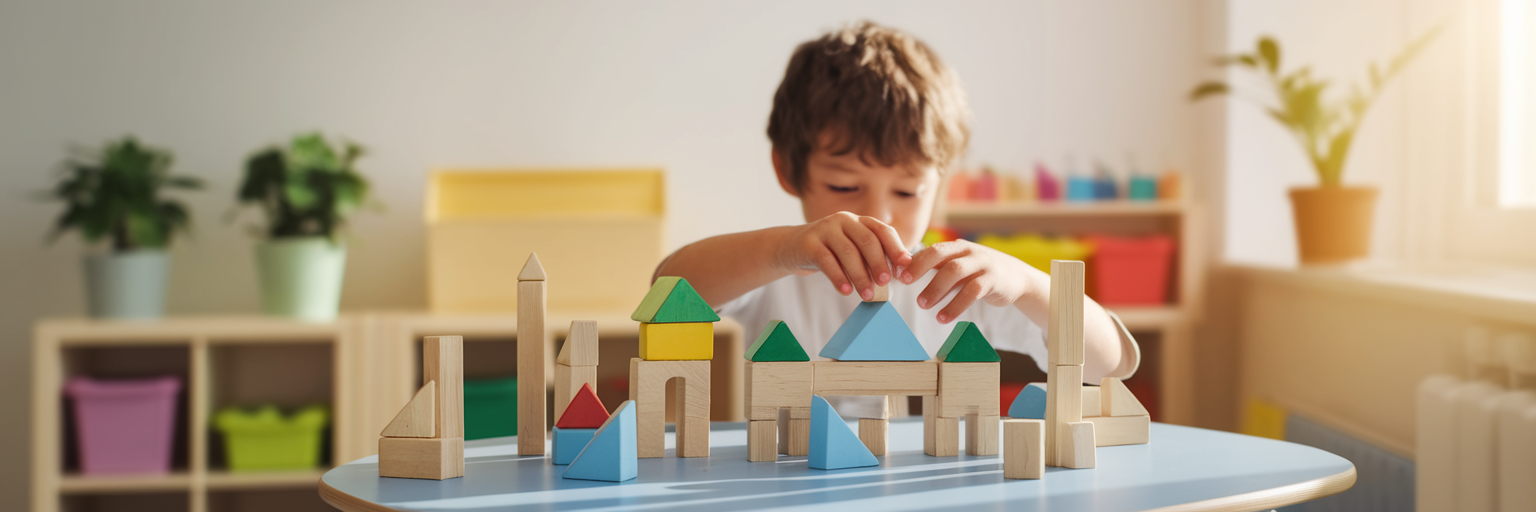Beyond the One-Size-Fits-All Classroom
The traditional classroom was designed around a standardized student, a model that often fails to recognize the diverse ways children learn. For exceptional children, this one-size-fits-all approach can sometimes obscure their true potential, leading to frustration instead of growth. This is where individualized learning plans come in, offering a profoundly different path forward.
Think of an Individualized Learning Plan (ILP) as a customized educational roadmap built specifically for your child, rather than a generic city map given to everyone. It’s a flexible strategy that adapts to their unique strengths, interests, and pace. This is distinct from an Individualized Education Program (IEP), which is a formal legal document within the public school system. While an ILP is a flexible plan, an IEP is a formal document governed by the Individuals with Disabilities Education Act (IDEA), as outlined in a guide from the U.S. Department of Education.
An ILP represents a philosophical shift. It moves away from focusing on what a child can't do and instead builds upon what they can. This strengths-based approach to tailored education for kids helps foster genuine confidence from the very beginning.
The Academic and Emotional Gains of Personalization

When a child’s education is built around their specific needs, the positive effects extend far beyond report cards. The benefits of individualized learning create a ripple effect, touching every aspect of their development. Academically, allowing a child to learn at their own pace removes the anxiety of falling behind. For children with learning differences like ADHD or dyslexia, this means they can achieve true subject mastery without the pressure of a rigid timeline.
This personalized approach also provides a significant boost to confidence. When a child’s unique learning style—be it visual, auditory, or hands-on—is honored, they feel seen and understood. School transforms from a place of struggle to a place of success. This newfound motivation is often supported by personalized learning strategies like multisensory teaching, which combines sight, sound, and touch to make abstract concepts more concrete and easier to retain.
Finally, these plans nurture crucial social-emotional skills. Goals are often set for communication, self-regulation, and positive peer interactions, helping children build the tools they need to thrive in social settings. This holistic approach ensures that the education for exceptional children supports the whole child, not just the student. Exploring these benefits is the first step, and our blog offers more parent resources to support your journey.
Identifying Your Child’s Unique Learning Blueprint
Understanding what your child needs to succeed begins at home, with you as their first and best observer. This isn't about diagnosis, but discovery. By paying close attention to their natural tendencies, you can gather invaluable insights that form their unique learning blueprint. It’s a process that empowers you to advocate for them effectively.
Start by observing them in their element. What do you see?
What activities naturally capture their attention and lead to periods of deep focus?
How do they approach problem-solving? Do they talk it out, draw a picture, or build a physical model?
In what type of environment do they seem most calm and receptive to learning—a quiet corner or a space with gentle background noise?
What topics or interests spark their curiosity, whether it's space, animals, or video game design?
Professional assessments from educational psychologists can complement your observations, providing a clear, objective picture of your child’s learning profile. Compiling these findings into a simple document creates a powerful tool for conversations with educators. This process isn't about applying labels. It’s about gathering the information needed to create tailored education for kids that truly fits. Once you have a clearer picture of your child's needs, you can explore a network of specialized schools designed to support these unique blueprints.
Key Components of an Effective Learning Plan

A truly effective plan moves beyond vague aspirations and is built on a foundation of clear, actionable components. The cornerstone of high-quality individualized learning plans is the use of SMART goals: Specific, Measurable, Achievable, Relevant, and Time-bound. This framework transforms fuzzy objectives into a clear path forward.
SMART Component Vague Goal SMART Goal Example Specific 'Get better at reading.' 'Child will improve reading fluency with grade-level texts.' Measurable 'Feel more confident.' 'Child will read a 150-word passage aloud with fewer than 5 hesitations or errors.' Achievable 'Master math.' 'Child will correctly solve 8 out of 10 double-digit addition problems independently.' Relevant 'Pay more attention.' 'Using his interest in dinosaurs, the child will write a three-paragraph story about a T-Rex.' Time-bound 'Sometime soon.' 'Child will achieve this reading fluency goal by the end of the next 8-week term.'
This table illustrates how to transform general aspirations into actionable steps within an individualized learning plan, making progress clear and trackable for parents, educators, and the child.
The best plans also weave a child’s strengths and interests into academic goals. If a child loves Minecraft, that passion can be a vehicle for teaching geometry or creative writing. Flexibility is another key ingredient, allowing for movement breaks or a quiet corner when needed. Finally, an ILP is a living document. Regular check-ins, perhaps every six to eight weeks, are essential to review progress, celebrate wins, and make adjustments. Our mission is rooted in the belief that every child deserves an education that sees and nurtures their potential.
Building a Strong Partnership with Educators
Your child’s success depends on a collaborative team, and you are a vital member of it. Building a strong partnership with educators starts with open communication from day one. Sharing the "learning profile" you created gives them immediate insight into your child's world. Agreeing on a regular update schedule, whether it's a weekly email or a bi-weekly call, keeps everyone aligned.
To make parent-teacher meetings productive, it helps to be prepared.
Come with a short agenda of two or three key points you want to discuss.
Share specific, recent observations from home, including both successes and challenges.
Ask open-ended questions like, “What strategies have you found most effective in the classroom?” to invite collaboration.
When you need to advocate for a change, frame it as a partnership. Instead of making a demand, try saying, “I've noticed my child is struggling with transitions at home. Have you seen this too? I'm curious what your thoughts are on trying a visual schedule.” This positions you as a problem-solving partner, not an adversary. If you're looking for guidance on how to find schools that prioritize this kind of collaborative environment, please feel free to reach out to our team.
Adjusting the Plan When Things Aren't Working
It’s natural to worry when a plan seems to hit a snag, but it’s important to remember that adjustments are a normal and healthy part of the process. The key is to recognize the signs that a review might be needed. These can include increased frustration around schoolwork, a sudden stall in progress, or consistent verbal resistance to learning activities.
If you notice these patterns, the first step is to document specific examples. This will help facilitate a focused conversation with the educational team. Requesting a plan review is not a sign of failure; it is a sign of a responsive and engaged team. The ability to adapt is one of the greatest strengths of individualized learning plans. It shows that the educational approach is evolving with your child, ensuring the education for exceptional children remains truly supportive and effective.
Get Expert Special Needs Resources
Join 15,000+ parents receiving vetted school recommendations, therapy insights, and advocacy strategies from child development experts.
What you'll receive:
🔒 Your email is secure • Unsubscribe anytime • 15,000+ parents trust us
